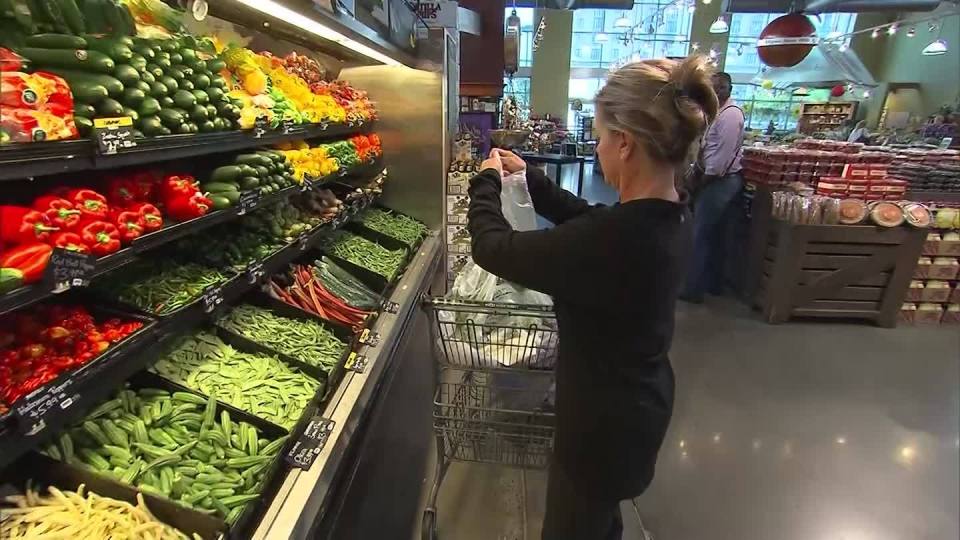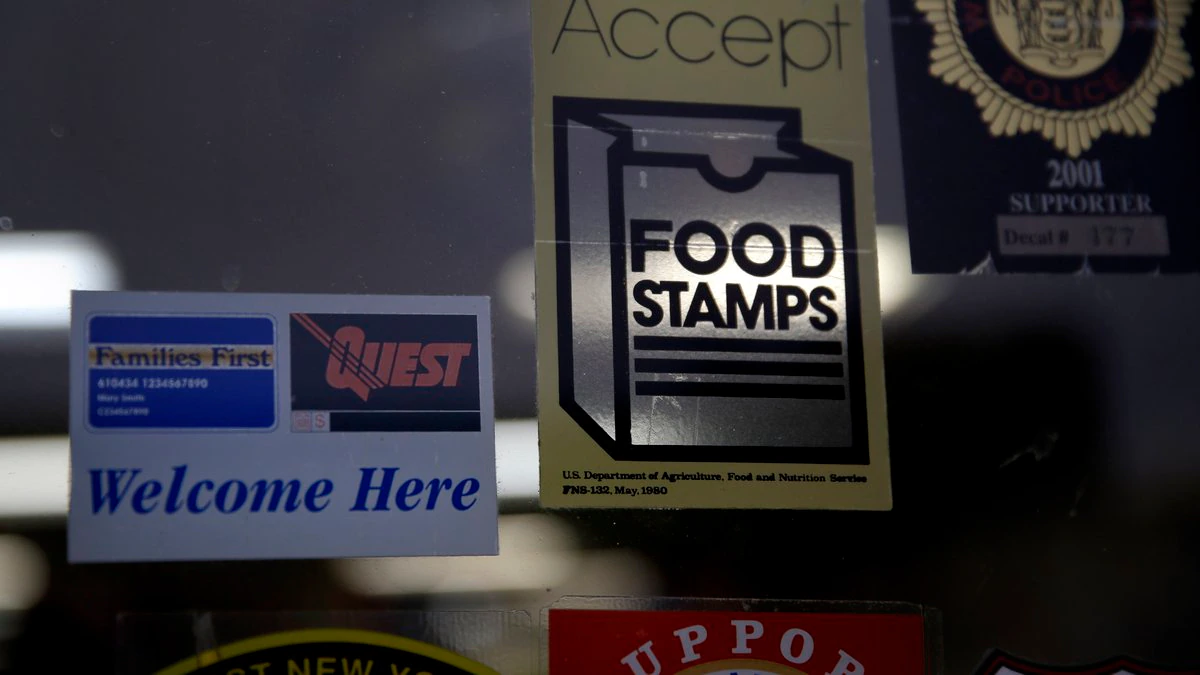
联邦准积欠学贷可暂时免还、取消违约 800万人受惠
世界新闻网
4/10/2022

拜登政府将为数百万名拖欠联邦学贷导致违约的民众解套,根据教育部先前公布数据估计,大约有800万人得以受惠。
教育部上周发表声明表示,这项计划将让所有积欠学贷偿还的借款人「重新开始」,摆脱拖欠帐款及贷款违约的冲击,可以在状况稳定之后才开始缴交学贷。
白宫新闻秘书莎奇(Jen Psaki)10日表示,她猜测拜登政府任内,助学贷款借贷人将必须在「某个时间点」开始偿还贷款。

莎奇上「周日福斯新闻」(Fox News Sunday)说:「我猜测将于某个时候开始支付贷款,但同样的,我们每个月会继续评估,每几个月评估状况,关注疫情的走向,也要看经济数据,注意哪部份我们需要持续帮忙,给美国人民一些喘息空间。」
拜登政府上周正式宣布第四次延期每月贷款支付及利息,延期至8月31日。白宫另外宣布计划取消在疫情前拖欠的数百万学贷借贷人债务,让这些借贷人有个「新的开始」。
拜登最新延期计划未能达到民主党人一连串的要求,民主党要求拜登政府至少在年底前期中选举后,继续疫情期间对借贷人的放宽政策,除此之外,拜登还面临逐渐增加的压力,要求他利用行政权力免除每位借贷人至少1万元的学贷。
白宫已多次向国会提议,表示若国会将议案移交给拜登,他将会签署议案。

Politico新闻网站去年10月报导,拜登政府正在研议让数百万联邦学贷借款人得以自动避开违约的方案,官员为这项计划暂时订名为「全新开始行动」(Operation Fresh Start)。
数名知情人士指出,接下来几个月里,政府官员陆续敲定计划细节,讨论过程则颇为复杂,例如教育部将通过何种方式为这项计划提供经费。
一名教育部官员接受Politico新闻网站访问时证实,所有陷入违约的联邦学贷借款人,将可根据疫情期间各种相关学贷暂停措施,让违约问题自动解除,包括直接向教育部申请联邦学贷的借款人,还有通过私人放款机构申请联邦担保学生贷款但后来却违约的借款人。报导指出,根据教育部先前公布数据,上述种类的联邦学贷估计有800万借款人违约。
一般而言,联邦学贷借款人若要解决违约,必须向催缴公司填写文档,才能启动作业程序。根据报导,民主党国会议员大力要求联邦政府简化手续,教育部也愿意从善如流。

「公职免学贷」计划修改 7万人受惠、减免近50亿元
世界新闻网
01/20/2022

免除部分美国人背负的高额学生贷款是拜登总统的主要政策之一;教育部20日宣布,「公职服务学贷减免」计划(Public Service Forgiveness Loan)修改后,约7万人的近50亿元学贷可望免除,最终将有55万人受益。
公职服务学贷减免计划是2007年提出,宗旨是吸引学生担任教师、警察、消防员、军人等公共服务工作,只要工作期间定期偿还,学贷十年后即可免除;但计划自运行以来,几乎没有任何人的学贷被联邦政府豁免。
教育部去年10月修改了免除学贷的标准,当时全国130万人试图通过这一计划豁免学贷;教育部表示,标准修改后,初期即有2万2000人可立即免掉学贷,2万7000人只要证明从事符合要求的工作也可免除,预计7万人将有资格免掉近50亿元的学贷。
教育部副部长卡瓦尔(James Kvaal)表示:「在公共部门供职十年的人,包括教师、护士、急救人员和军人等许多公职人员,都能得到我们的支持和依赖公职服务学贷减免计划,尤其是在疫情时期。如今拜登政府履职一年,对他们的支持将继续。」
拜登总统面临要求他利用行政权豁免4300万人联邦学贷的强烈呼声,他竞选时承诺每人豁免1万元学贷,如今却表示学贷豁免权属于国会;拜登19日在执政周年的记者会上被问到如何取消学贷时没有回答,但拜登政府将疫情期间暂停偿还学贷的期限延至5月1日。
学贷豁免计划是鼓励大学毕业生不受私营部门的高薪诱惑,而到公共部门就职,作为交换条件,联邦政府十年后将免除他们的学贷。
学贷减免计划貌似简单但运行复杂,对豁免资格的要求严格,多数人因为借贷的种类不符合规定而不能参加;许多人是10年后申请豁免时才发现不符资格,但又没有其他选择,只好重新制定偿还计划。
拜登上任以来,教育部已豁免67万5000人约150亿元的学贷,均为通过扩大运行各项债务豁免计划;教育部修改的「公职服务贷款减免」计划,是扩大运行学贷豁免计划的一部分。
You Might Finally Qualify for Student Loan Forgiveness
New Public Service Loan Forgiveness rules mean hundreds of thousands of borrowers could have their loans forgiven faster than expected.
By Mike Winters
10/07/2021

For years, the Public Service Loan Forgiveness (PSLF) program has struggled to actually forgive student loan debt. But yesterday, the Biden administration announced changes that will immediately erase student loan debt for roughly 22,000 borrowers—and will help hundreds of thousands more reach loan forgiveness sooner than expected. Here’s how the changes might affect your student loans.
Eased requirements for the PSLF program
In 2007, Congress created the federal student loan forgiveness program to encourage people to work in federal and local governments, public schools, and the military. In exchange for about 10 years of full-time service (or 120 student loan payments), the program forgives the remaining balance on federal loans—or at least, that’s how it’s supposed to work. However, according to a 2019 Government Accountability Office (GAO) report, this happens rarely, as it found only 1% of applicants were deemed eligible for student loan forgiveness.
Part of the problem is that the program has only been available to borrowers who have Direct Loans, a specific type of student loan managed by the federal government. One option has been to consolidate existing student loans into a Direct Loan, but that just set back borrowers even further, as previous payments for other loans don’t count towards the 120 payments needed to forgive the outstanding balance.
To that end, the Education Department is now offering a limited waiver that “allows all payments by student borrowers to count toward PSLF, regardless of loan program or payment plan.” All borrowers who currently have FFEL, Perkins, or other non-Direct Loans, can get this benefit of this limited waiver if they apply to consolidate into the Direct Loan program and submit a PSLF form by Oct. 31, 2022. Additionally, members of the military will be able to count deferment and forbearance while on active duty toward the loan forgiveness. The Education Department estimates this will help 550,000 student loan borrowers reach loan forgiveness sooner than expected.
How to apply for the PSLF waiver
The Education Department says it will be contacting borrowers and encouraging them to consolidate their loans or apply for the program by Oct. 31, 2022. To apply for the waiver, start by visiting StudentAid.gov/PSLFWaiver.
SNAP benefits increasing statewide
By Johan Sheridan
10/01/2021

ALBANY, N.Y. (NEWS10) — New Yorkers in the Supplemental Nutrition Assistance Program (SNAP) will reportedly see an increase of about $36 per family member starting next month.
According to the office of Gov. Kathy Hochul, all New Yorkers receiving SNAP benefits will get more money because of a federal cost adjustment. The new regular monthly amount attempts to better provide low-income individuals and families access to healthy foods.
“Now more than ever, New Yorkers are seeing their money for food stretched thinner and thinner, which in turn forces them into making food choices that are cheaper, but far less nutritious,” Hochul said in a statement. “This long-overdue increase in benefits will give households across New York State the purchasing power to buy nutritious foods, which in turn will ultimately result in healthier outcomes.”
In New York, the maximum benefit for a family of four will grow from $680 to $835. Nearly 3 million households throughout the state were in SNAP in July.
Hochul’s office says the boost in benefits brings in over $1.4 billion in federal funding to the state. According to federal estimates, every dollar of SNAP benefits spent results in about $1.59 in economic activity.
Last year, the USDA reevaluated the plan used to calculate SNAP benefits, resulting in the first cost adjustment in more than 45 years. The new plan also altered how eligibility is determined and the level of benefits received. The shift is meant to reflect changing dynamics in food sales and shoppers’ priorities over five decades.
The USDA evaluated current food prices, typically American diets, and nutritional value. The agency concluded that the cost of healthy, practical, and affordable food is 21% higher than SNAP benefits offered. Hochul’s office points out that studies consistently show that food benefit levels are too low to provide for a realistic, healthy diet, even with households adding funds to the pot.
USDA is permanently boosting food stamp benefits
By ASHRAF KHALIL and JOSH BOAK,
Associated Press

WASHINGTON — President Joe Biden’s administration has approved a significant and permanent increase in the levels of food aid available to needy families — the largest single increase in the program’s history.
Starting in October, average benefits for food stamps — officially known as the Supplemental Nutrition Assistance Program, or SNAP — will rise more than 25 percent above pre-pandemic levels. The increased assistance will be available indefinitely to all 42 million SNAP beneficiaries.
The increase coincides with the end of a 15 percent boost in SNAP benefits that was ordered as a pandemic protection measure. That benefit expires at the end of September.
Agriculture Secretary Tom Vilsack said that with the change, the U.S. “will do a better job of providing healthy food for low-income families.”
The aid boost is being packaged a major revision to the USDA’s Thrifty Food Plan, which estimates the cost to purchase groceries for a family of four and guides the way the government calculates benefits. In practical terms, the average monthly per-person benefits for qualified recipients will rise from $121 to $157.
The increase is projected to cost an additional $20 billion per year, but it won’t have to be approved by Congress. A farm law passed in 2018 by the then-GOP led Congress and signed by former President Donald Trump already directed the department to reassess the Thrifty Food Plan.
“Whether you’re a Republican or a Democrat, I think there’s a shared understanding of the importance of this program,” Vilsack said in a conference call with reporters.
The increase is part of a multi-pronged Biden administration effort to strengthen the country’s social safety net. Poverty and food security activists maintain that longstanding inadequacies were laid bare by the COVID-19 pandemic, presenting an opportunity to make generational improvements that reach beyond the current public health crisis.
Activists say the previous levels of pre-pandemic SNAP assistance simply weren’t enough, forcing many households to choose cheaper, less nutritious options or simply go hungry as the funds ran low toward the end of the month.
Vilsack said the increased funding will allow families to “be able to make healthy choices” all month long.
The changes are not directly connected to the COVID-19 pandemic, but Vilsack said the crisis helped underscore the importance of the food assistance program.
“A lot of people who thought they’d never take part in the SNAP program found themselves in need,” he said. “The pandemic sort of shocked people out of the belief that this was a program for someone else.”
Federal Communications Commission
Emergency Broadband Benefit

The Emergency Broadband Benefit is an FCC program to help families and households struggling to afford internet service during the COVID-19 pandemic. This new benefit will connect eligible households to jobs, critical healthcare services, virtual classrooms, and so much more.
About the Emergency Broadband Benefit
The Emergency Broadband Benefit will provide a discount of up to $50 per month towards broadband service for eligible households and up to $75 per month for households on qualifying Tribal lands. Eligible households can also receive a one-time discount of up to $100 to purchase a laptop, desktop computer, or tablet from participating providers if they contribute more than $10 and less than $50 toward the purchase price.
The Emergency Broadband Benefit is limited to one monthly service discount and one device discount per household.
Who Is Eligible for the Emergency Broadband Benefit Program?
A household is eligible if a member of the household meets one of the criteria below:
- Has an income that is at or below 135% of the Federal Poverty Guidelines or participates in certain assistance programs, such as SNAP, Medicaid, or Lifeline;
- Approved to receive benefits under the free and reduced-price school lunch program or the school breakfast program, including through the USDA Community Eligibility Provision in the 2019-2020 or 2020-2021 school year;
- Received a Federal Pell Grant during the current award year;
- Experienced a substantial loss of income due to job loss or furlough since February 29, 2020 and the household had a total income in 2020 at or below $99,000 for single filers and $198,000 for joint filers; or
- Meets the eligibility criteria for a participating provider’s existing low-income or COVID-19 program.
How to Apply
The online application for the Emergency Broadband Benefit Program is experiencing high demand. We appreciate your patience as we actively work to resolve any connectivity issues users may encounter.
Apply Now
There are three ways for eligible households to apply:
- Contact your preferred participating broadband provider directly to learn about their application process.
- Go to GetEmergencyBroadband.org to apply online and to find participating providers near you.
- Call 833-511-0311 for a mail-in application, and return it along with copies of documents showing proof of eligibility to:
Emergency Broadband Support Center
P.O. Box 7081
London, KY 40742
After receiving an eligibility determination, households can contact their preferred service provider to select an Emergency Broadband Benefit eligible service plan.
Get More Consumer Information
Check out the Broadband Benefit Consumer FAQ for more information about the benefit.
Which Broadband Providers Are Participating in the Emergency Broadband Benefit?
Various broadband providers, including those offering landline and wireless broadband, are participating in the Emergency Broadband Benefit. Find broadband service providers offering the Emergency Broadband Benefit in your state or territory.
Broadband providers can find more information about how to participate here.
Source: https://www.fcc.gov/broadbandbenefit
Evictions During COVID-19: Landlords’ Rights and Options When Tenants Can’t Pay Rent
Tips, resources, and advice for landlords whose tenants aren’t able to pay the rent due to the coronavirus outbreak.
By Ann O’Connell, Attorney
11/01/2020
Many renters are facing financial challenges resulting from coronavirus-related business shut-downs, furloughs, layoffs, and stay-at-home orders. The longer this crisis goes on, the more likely it is that many will not be able to pay their rent. When renters default on rent, landlords suffer, and might not be able to meet their own financial obligations, such as making the mortgage payments on the rental property.
Here are some suggestions about how landlords can mitigate the financial impact of tenant defaults during the COVID-19 outbreak.
Six Spaces Home Staging

Contact: Hongliang Zhang
Tel: 571-474-8885
Email: zhl19740122@gmail.com
Terminations and Evictions
Under normal circumstances, when tenants don’t pay rent, landlords have the option of terminating the tenancy (by serving the tenant with either a pay rent or quit notice or an unconditional quit notice, depending on the applicable laws). When tenants don’t pay the rent or move out by the deadline given in the notice, landlords can then file an eviction lawsuit to have the tenants physically removed from the rental.
However, health and safety concerns due to COVID-19 have led many states, cities, counties, and courts to place moratoriums on evictions. The scope of these temporary bans on evictions varies greatly: some have banned any and all action relating to evictions, while others simply postpone hearings on evictions until the court can arrange a hearing via telephone or video.
If you are a landlord in an area with an eviction moratorium, you might still be able to file eviction papers with the court, but your case might not be heard for a while. However, even if there are no bans in place, evicting tenants who can’t pay the rent due to the coronavirus crisis probably shouldn’t be your first recourse. Aside from optics (you don’t want to get a reputation as the ruthless landlord who booted tenants out of their home in the middle of a stay-at-home order), if you remove tenants right now, you’re going to be faced with having to disinfect the rental, advertise the rental, screen new prospective tenants (of which there might be very few), sign a new lease or rental agreement, and get the new tenants moved in—all while taking measures to abide by emergency guidelines and health and safety measures.
Consider the following options instead.
Evaluate Your Personal Financial Situation
Take a moment to evaluate your own finances. As dire as it sounds, it might be time to take stock of what could happen in a worst-case scenario. Most landlords have likely considered the situation where tenants don’t pay rent, as this can happen at any time. But there’s no denying that this is a different situation—what will happen if your tenants can’t pay for a long time, and your options for finding new (paying) tenants are slim?
Your assessment of how this worst-case scenario will affect your ability to pay your mortgage (if any) and your personal bills will inform how you respond when your tenants can’t pay their rent.
- If your financial situation looks grim: If your ability to pay the mortgage on your rental property hinges on month-to-month rental income, you should take actions to prevent your own default This includes options discussed below, such as contacting your lender and proactively seeking arrangements with tenants that allow them to make at least partial payments.
- If you have a few months’ reserves: If your personal reserves or financial position won’t feel too much of a pinch if tenants aren’t able to pay rent for a while, you still might have to make some compromises to retain good tenants. If you have tenants who have previously been reliable and are simply finding it hard to make ends meet currently, do what you can to take some pressure off them—see the discussion below about working out a temporary solution with tenants.
Try to Work Out a Temporary Solution With Tenants
Depending on how desperately you need to receive income from your rental, you have a few options for working with tenants who aren’t able to pay rent because of COVID-19. Consider the following possible arrangements.
- Forgive rent. If your situation allows for it, you could waive rent for a month, with an agreement to revisit the payment arrangement on a certain date. A landlord in Bakersfield recently did this for his tenants.
- Postpone rent. You could offer to postpone rent payments for a month, with an agreement that it will be repaid. Your repayment arrangement could state that the rent owed could be spread out over time, paid all at once, or paid when (if) a stimulus check
- Reduce rent. If you can, consider dropping the rent temporarily to a level that enables you to meet your obligations but forgoes profit for the time being. For example, if you normally collect $1200 a month, but your mortgage is $900 a month, you could temporarily drop rent to $900 to make sure you at least don’t get in trouble with your lender.
Before deciding to make any of these adjustments, try talking to your tenants. Ask them straight out what they think they can make work. If you’re able to accommodate their suggestions, chances are higher that they will do everything they can to hold up their end of the bargain. Be sure to put any agreements in writing, preferably as an addendum to your current lease or rental agreement that includes all details of the arrangement.
Look for Outside Assistance
Even if you think you can float a month or two without rental income, you still might want to consider taking some measures now to protect your position in the event that the coronavirus crisis lasts longer than your cushion can handle. If you’re already feeling the pinch, take these actions immediately.
Attend to Your Mortgage
At this point in the COVID-19 crisis, most private lenders are willing to work with borrowers to ensure that they don’t lose their homes. Call your lender directly and ask what steps it is taking to assist borrowers who can’t meet their mortgage obligations due to the coronavirus pandemic.
- If your loan is owned by Fannie Mae or Freddie Mac, you might be able to delay making payments for a certain period of time without incurring late fees or getting hit with a credit score penalty.
- Look into your options under the Coronavirus Aid, Relief, and Economic Security Act.
- The Federal Housing Administration (FHA) has put in place a foreclosure moratorium for single family homeowners with FHA-insured mortgages.
- Visit your state’s website to find out if the state is offering assistance to homeowners. For example, New York has announced a delay of mortgage payments for 90 days. Many other states are postponing any foreclosure actions indefinitely. Find your state’s website at State and Government on the Net.

Look Into Property Tax Breaks
Some states and counties are extending the deadline for paying property taxes, or cancelling late fees and interest. Check your county’s tax assessor’s website to see if this is an option where your property is located.
Seek a Loan
Consider seeking a loan from family, friends, or private lenders. The U.S. Small Business Administration might be another source of assistance—its disaster loan assistance web page has a wealth of information. You can also contact your regular bank or credit union and inquire about what assistance it can offer.
Research Options for Your Renters
Some areas are beginning to offer rent vouchers or emergency funds to renters in need. For example, the Pennsylvania Apartment Association is collecting donations for funds to give to renters who can’t pay rent. Currently, renters’ needs are getting a lot more attention in the press than landlords’ needs, and there are already a lot more resources being made available for renters. It’s in your best interest to research these options and bring them to your renters’ attention—do what you can to help your tenants pay you.
Landlords are getting squeezed between tenants and lenders
By ANNE D’INNOCENZIO

NEW YORK (AP) — When it comes to sympathetic figures, landlords aren’t exactly at the top of the list. But they, too, have fallen on hard times, demonstrating how the coronavirus outbreak spares almost no one.
Take Shad Elia, who owns 24 single-family apartment units in the Boston area. He says government stimulus benefits allowed his hard-hit tenants to continue to pay the rent. But now that the aid has expired, with Congress unlikely to pass a new package before Election Day, they are falling behind.
Heading into a New England winter, Elia is worried about such expenses as heat and snowplowing in addition to the regular year-round costs, like fixing appliances and leaky faucets.
Elia wonders how much longer his lenders will cut him slack.
“We still have a mortgage. We still have expenses on these properties,” he said. “But there comes a point where we will exhaust whatever reserves we have. At some point, we will fall behind on our payments. They can’t expect landlords to provide subsidized housing.”
The stakes are particularly high for small landlords, whether they own commercial properties, such as storefronts, or residential properties such as apartments. Many are borrowing money from relatives or dipping into their personal savings to meet their mortgage payments.
The big residential and commercial landlords have more options. For instance, the nation’s biggest mall owner, Simon Property Group, is in talks to buy J.C. Penney, a move that would prevent the department store chain from going under and causing Simon to lose one of its biggest tenants. At the same time, Simon is suing the Gap for $107 million in back rent.
Michael Hamilton, a Los Angeles-based real estate partner at the law firm O’Melveny & Myers, said he expects to see more retail and other commercial landlords going to court to collect back rent as they get squeezed between lenders and tenants.
Residential landlords are also fighting back against a Trump administration eviction moratorium that protects certain tenants through the end of 2020. At least 26 lawsuits have been filed by property owners around the country in places such as Tennessee, Georgia and Ohio, many of them claiming the moratorium unfairly strains landlords’ finances and violates their rights.
Apartment dwellers and other residential tenants in the U.S. owe roughly $25 billion in back rent, and that will reach nearly $70 billion by year’s end, according to an estimate in August by Moody’s Analytics.

An estimated 30 million to 40 million people in the U.S. could be at risk of eviction in the next several months, according to an August report by the Aspen Institute, a nonprofit organization.
Jessica Elizabeth Michelle, 37, a single mother with a 7-month-old baby, represents a growing number of renters who are afraid of being homeless once the moratorium on evictions ends.
The San Francisco resident saw her income of $6,000 a month as an event planner evaporate when COVID-19 hit. Supplemental aid from the federal government and the city helped her pay her monthly rent of $2,400 through September. But all that has dried up, except for the unemployment checks that total less than $2,000 a month.
For her October rent, she handed $1,000 to her landlord. She said her landlord has been supportive but has made it clear he has bills to pay, too.
“I never had an issue of paying rent up until now. I cry all night long. It’s terrifying,” Michelle said. “I don’t know what to do. My career was ripped out from under me. It’s gotten to the point of where it’s like, ‘Am I going to be homeless?’ I have no idea.’”
Some landlords are trying to work with their commercial or residential tenants, giving them a break on the rent or more flexible lease terms. But the crisis is costing them.
Analytics firm Trepp, which tracks a type of real estate loan taken out by owners of commercial properties such as offices, apartments, hotels and shopping centers, found that hotels have a nearly 23% rate of delinquency, or 30 days overdue, on their loans, while the retail industry has a 14.9% delinquency rate as of August.
The apartment rental market has so far navigated the crisis well, with a delinquency rate of 3%, according to Trepp. That’s in part because of the eviction moratorium, along with extra unemployment benefits from Washington that have since expired.
“There are bad actors, but the majority of landlords are struggling and are trying to work with a bad situation,” said Andreanecia M. Morris, executive director of HousingNOLA, a public-private partnership that pushes for more affordable housing in the New Orleans area.
Morris, who works with both landlords and tenants, said that government money wasn’t adequate to help tenants pay their rent, particularly in expensive cities. She is calling for comprehensive rental assistance.
She fears that residential landlords will see their properties foreclosed on next year, and the holdings will be bought by big corporations, which are not as invested in the neighborhoods.
Gary Zaremba, who owns and and manages 350 apartment units spread out over 100 buildings in Dayton, Ohio, said he has been working with struggling tenants — many of them hourly workers in restaurants and stores — and directs them to social service agencies for additional help.
But he is nervous about what’s next, especially with winter approaching and the prospect of restaurants shutting down and putting his tenants out of work. He has a small mortgage on the buildings he owns but still has to pay property taxes and fix things like broken windows or leaky plumbing.
“As a landlord, I have to navigate a global pandemic on my own,” Zaremba said, “and it’s confusing.”






